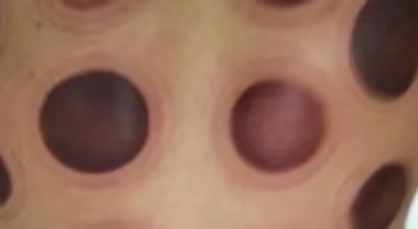Cupping therapy for citizens
Participate in outdoor community activities and free cupping for citizens
Cupping therapy uses suction cups placed on the skin to create negative pressure, which increases blood flow, reduces stagnation, and helps alleviate pain. Cupping is commonly used for muscle pain relief, treating colds, and respiratory issues.
The citizens were very enjoy and welcome, also trained our foreinger interns.

The different colors that appear after cupping therapy indicate various conditions within the body according to traditional Chinese medicine. These colors primarily reflect the state of qi and blood circulation, the presence of cold or dampness, and the release of toxins. Here's what the common post-cupping colors might signify:
Light Red:
Indicates that the qi and blood are relatively balanced, and the body is in good condition.
This color usually suggests that the local blood circulation has improved, and the mark will fade quickly.
Red or Deep Red:
Suggests the presence of heat in the body, with relatively abundant qi and blood, but possibly with local inflammation or a heated condition.
This color often indicates some degree of heat toxins or internal heat.
Purple or Dark Purple:
Indicates the presence of blood stasis, qi stagnation, or retained cold and dampness, with poor local blood circulation.
This color typically suggests a more serious blockage in that area.
Black:
Indicates long-term blood stasis or severe cold and dampness in the body.
This rare color usually signifies a more serious issue that requires further treatment.
Pale Yellow or Orange:
Suggests the presence of dampness or retained cold-damp in the body, with heavy dampness.
This color is commonly seen in individuals with weak spleens or those with water retention.
Blue or Blue-Purple:
Indicates the presence of cold or qi stagnation, with poor qi and blood circulation.
This color suggests a significant retention of cold in that area.
White:
If the skin around the cupping mark appears pale, it typically indicates strong cold presence or weak skin.
This color often signifies poor blood circulation in that region.
It is important to note that the color changes after cupping can also be influenced by a person's constitution, the duration of the cupping, and the technique used. Therefore, the colors seen after cupping should be considered as a reference to the body's condition, with any specific health concerns requiring further evaluation through other symptoms and diagnostic methods.


